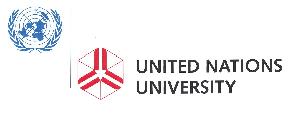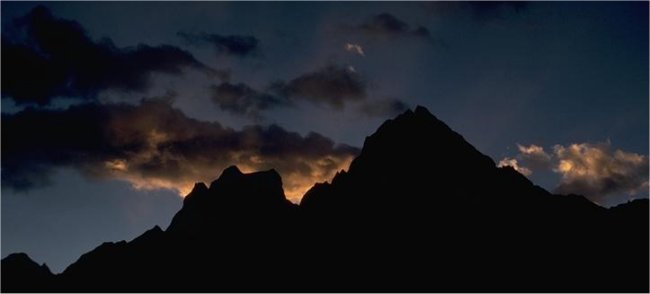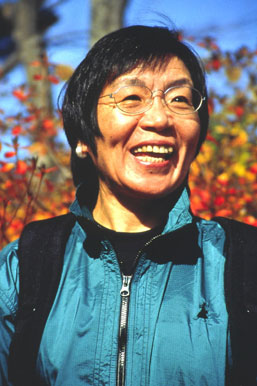
The Namche Conference: May 24-26,
2003
People, Park, and Mountain Ecotourism
Celebrating:
HMG Department of National Parks and Wildlife
Conservation of Nepal, United Nations University, and Bridges-PRTD jointly announce a global
conference on mountain ecotourism to be held in Namche Bazar, Nepal, on
May 24-26, 2003.
The Namche Conference is to coincide with the events marking the 50th anniversary of the first ascent of Sagarmatha by Sir Edmund Hillary and Tenzing Norgay on May 29, 1953. For more information about the Everest Jubilee, and comprehensive information about Nepal, see the Nepal Tourism Board's Web site at WelcomeNepal.com and Mount Everest Golden Jubilee. Other useful Web sites are listed below.
MENU
Home
Venue
Format
Agenda
Focus
Themes
Organizers
Sponsors
Participants
Presentations
e-Event
Register
(online form)
Register
(by email)
Payment
Hillary Medal
Photos
Links
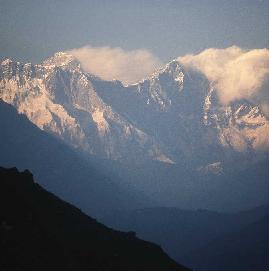
Mount Everest (Sagarmatha) seen from above Namche Bazar, early evening (April, 1979). Photo by J.D.Ives. See his Mountain Prospects: Images for the International Year of Mountains - A UNU Mountain Photographic Exhibit
Venue:
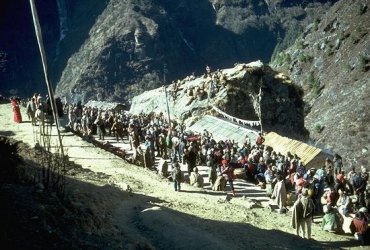 Market day at Namche Bazar (October 1982). [Click on this photo, and on others below, to see larger images.]
Market day at Namche Bazar (October 1982). [Click on this photo, and on others below, to see larger images.]
|
Namche Bazar (3450 m, 11,319') is the gateway to Sagarmatha [Mt. Everest] National Park in the Khumbu district of Nepal. This park, which is currently celebrating its 25th anniversary, is a World Heritage Site, and arguably the most important mountaineering and mountain ecotourism destination in the world. The venue itself will offer a point of reference for the conference; furthermore, the conference itself may be regarded as a variety of "mountain ecotourism" worth examining in its own right.
Accommodations are available in a wide variety of lodges and hotels. According to Sherpa practice, rooms are generally very inexpensive (as low as $1.50 per person per night), but guests are expected to eat most meals at the associated restaurant. By international standards, food is also quite cheap: a full meal can be had for $2-3. Upscale accommodations are also available, generally in the range of $10-25 per room per night; at the high end, rooms in Everest View Hotel in Syangboche, an hour's walk above Namche, cost around $200 per night. Conference participants may make their own arrangements, or, if they prefer, we can make reservations. If you request that Namche Conference organizers assist you with reservations, you MUST notify Empar Alos of any changes in these reservations. If you fail to do so, and notify only the hotel management, your room may remain unoccupied, and we will be billed!
Kathmandu Accommodations: We have been offered a 75% discount at the beautiful Hotel Vajra. Details will be announced via e-group.
Contingency plan: As you are probably aware, there is a truce between the Nepalese government and the Maoist insurgents. If by some chance things become unstable in the Khumbu area, we will make arrangements for the Namche Conference to be held in Kathmandu.
Format:
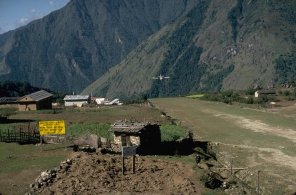 Lukla airstrip, gateway to Everest (October 1982). Click on photo to view others in our incipient collection of photographs from Sagarmatha National Park.
Lukla airstrip, gateway to Everest (October 1982). Click on photo to view others in our incipient collection of photographs from Sagarmatha National Park.
|
- Presentations
- Presenters should submit abstracts by December 31, 2002; full drafts should be submitted by March 15, 2003. The papers will be distributed prior to the conference, and participants will be expected to have read them. Final drafts must be submitted by August 15 in order to be included in the CD-ROM proceedings. The actual presentations will be five-minute synopses, and are intended primarily to remind participants of what they have already read. An important facet of this event will be participation by local residents, who will be encouraged to attend and take an active role in all aspects of the conference. Following each cluster of thematically-related five-minute presentations there will be a period of open discussion.
- Individual and collaborative presentations are acceptable.
- Discussion Workshops
- In addition to "presentations" focusing on papers prepared and distributed in advance, there will be a number of Discussion Workshops proposed and facilitated by conference participants. No abstracts or texts are required for these discussions, but the proposing participant should submit a list of questions and discussion points, and also take an active role in leading the discussion.
- Presenters should submit abstracts by December 31, 2002; full drafts should be submitted by March 15, 2003. The papers will be distributed prior to the conference, and participants will be expected to have read them. Final drafts must be submitted by August 15 in order to be included in the CD-ROM proceedings. The actual presentations will be five-minute synopses, and are intended primarily to remind participants of what they have already read. An important facet of this event will be participation by local residents, who will be encouraged to attend and take an active role in all aspects of the conference. Following each cluster of thematically-related five-minute presentations there will be a period of open discussion.
- April 2 - April 27: Together with International Centre for Integrated Mountain
Development (ICIMOD), we have held a series of e-consultations ["People, Park and Mountain Tourism"] focusing on the topics to be
discussed in Namche. In the next few days, we will be posting syntheses of the four sessions
of these e-Consultations. These syntheses, along with a list of
questions and proposals for further discussion will be distributed
to all participants in the Namche Conference. The ensuing debates
will be summarized and included, along with the archives of the
e-Consultations and texts of all presentations, in the CD-ROM proceedings
to be published by the United Nations University (UNU) this autumn.
- May 11 - May 20: [Optional] Rapid Overview Trek.
Prior to the beginning of the conference proper, Empar Alos and Seth Sicroff
will lead a "teahouse trek" from Namche to Everest Base Camp and
back. We will leave on our about May 11, and return to Namche on or
about May 20. The itinery will be as follows:
Tangboche, Pheriche, Dingboche, Lobuche, Gorak Shep (with an ascent
of Kala Pattar and a day trip to Everest Base Camp), Pheriche,
Pangboche, Phortse, Khumjung, Namche Bazar (by way of Khunde).
- An important objective of this trip will be to hold conversations with villagers and entrepreneurs of Khumbu, and to that end we will be compiling a list of discussion questions; if you have suggestions, please forward them to us.
- Cost: Each participant will be responsible for his or her own expenses: an average of $10/day should suffice.
- May 23, 8-10 pm: Pre-Conference Reception at the Namche Hotel.
- May 24:
- 8-10:30 am: Opening Convocation at the Namche Gompa.
- Welcome address by Dr. S. M. Amatya (or representative) on behalf of HMG/Nepal Department of National Parks and Wildlife Conservation (DNPWC).
- Remarks by Dr. Teiji Watanabe (UNU), Dr. Gabriel Campbell (ICIMOD), P.T. Sherpa (KEEP).
- Welcome speech by Junko Tabei.
- Keynote speech by His Holiness Ngawang Tenzin Zangbu, Head Lama of Tengboche Monastery.
- Brief visit to Tenzing Norgay chorten.
- 11:00-11:45 am: Visit to Sagarmatha National Park (SNP) Headquarters. Address by Warden Gopal Bhattarai of SNP.
- 1:00-3:00 pm: Session I. Sharing Indigenous Knowledge: How to optimize impact and mitigate hazards of mountain tourism development. (Venue: Tramserku View Lodge) First hour: small group discussion. Second hour: plenary discussion.
- 3:30-5:30 pm: Session II. Growing the Pie: How to increase mountain tourism, with special attention to gateway and regional strategies. (Venue: Namche Hotel) First hour: small group discussion. Second hour: plenary discussion.
- May 25:
- Break-out expedition up the Bhote Kosi.
- 8 am: Leave Namche.
- 8:45-9:30 am: Visit SNP nursery
- 10:30 – 12pm: Visit to Khumbu Bijuli headquarters.
- 3:00-5:30 pm: Preliminary discussion of Namche Conference proposals (Venue: Namche Bakery)
- May 26:
- 9:30-11:30 am: Sessions IIIa and IIIb. Workshops in Green Technology (Venues: Namche Hotel and Tramserku View Lodge)
- 1:00-3:00 pm: Session IV: Resolutions (Venue: Namche Hotel)
- 8:00 am – 10:00 pm: Farewell Party. (Venue: Tramserku View Lodge)
- Output: The conference proceedings, to be published in CD-ROM form, will incorporate final texts of papers (which may be revised and resubmitted before August 15, 2003), as well as summaries of the discussions.
- An important objective of this trip will be to hold conversations with villagers and entrepreneurs of Khumbu, and to that end we will be compiling a list of discussion questions; if you have suggestions, please forward them to us.
- Parks: The role of protected mountain areas in cultural and natural conservation as well as in ecotourism development; interaction of park administrations with local residents; institutional varieties and shifting structures; the role of NG0's and INGO's; local, regional, national, and international politics as they impinge on park function.
- Security: Hosts and visitors are exposed to many hazards, including trail instability, various natural catastrophes, high-altitude medical problems, terrorism and other crime. Trekkers sometimes simply get lost. What can be done to mitigate such hazards? Whose responsibility is search and rescue? How can the public's need to be informed by reconciled with the economic interests of the travel industry?
- Cultural preservation: How can tourism development stimulate ethnic pride? How can cultural traditions and arts function as tourism assets without undermining their value through commodification? What is the impact of cross-cultural contact on guests and on hosts?
- Economic impact: What economic opportunities and risks does the tourism trade pose for the host community? for the region (including neighboring or buffering areas)? for the nation? What can be done to assure gender equity and to protect particularly vulnerable groups (for example, porters, children, subsistence farmers)?
- Livestock: Impact of animal husbandry on the natural ecosystem (adversarial relationship with predators; landscape change; stress on vegetation and water resources). Manure management.
- The built environment: Green building to improve local standards and to mitigate negative impact of tourism (fuel-saving stoves, alternative energy). Opportunities and risks of tourism-related infrastructure (including roads, bridges, hydroelectric plants, visitor centers, outhouses, and waste facilities). How to protect indigenous architecture, monuments, outdoor art. Zoning.
- Marketing: Defining the target market. Commercial tours and independent trekking: maximizing the benefits, minimizing impact. Carrying capacity. Seasonality. Promotion/restriction of tourism flow. Heritage interpretation. Pricing. Quality control. Competition. Souvenirs. Commercial tours.
- Education and volunteer work as tourism attractions. Impact of anthropological, scientific and other research.
- Development issues. The dynamics of participation.
- Everest: the park and the icon.
- Nominees working in remote mountainous regions anywhere in the world will be eligible.
- As the award is for both cultural and environmental conservation, nominees should be working in inhabited mountain regions that are remote from population centers and most elements of modern infrastructure.
- One purpose of this award is to draw attention to efforts that are in need of broader support; therefore nominees should be currently engaged in such a project.
- You may register by e-mail or through the online form at our Web site: http://namche.info. Payment by MasterCard or Visa only. Registration fees are non-refundable.
- Fees: No charge for citizens of SAARC nations. Non-SAARC students: $20. Other non-SAARC nationals: $50.
- Deadlines: March 15 is the last date to register and to pay registration fees (if applicable). Abstracts must be submitted by December 31, and full papers by March 15. If you want assistance in making room reservations, let us know as soon as possible. Remember, there will be many people competing for limited accommodations, as the Conference coincides with closing ceremonies for the Everest Jubilee Year.
- Bridges-PRTD will maintain a welcoming facility at their office: 5/751 Jhochhen Tole (Freak Street), above N.K.'s River Experience.
- HMG Department of National Parks and Wildlife Conservation (DNPWC)
- United Nations University (UNU)
- Bridges: Projects in Rational Tourism Development (Bridges-PRTD)
- International Center for Integrated Development of Mountains (ICIMOD)
- Japanese Embassy to Nepal
- Nepal Tourism Board (NTB)
- United Nations University (UNU)
- International Center for Integrated Mountain Development (ICIMOD)
- Bridges: Projects in Rational Tourism Development
- Dr. Swoyambhu Man Amatya, Director General, Department of National Parks and Wildlife Conservation, HMG/Nepal. Chair of the NC Organizing Committee
- Empar Alos, engineer; director of Bridges-PRTD
- ealos@bridges-prtd.com
- Dr. Alton Byers; Senior Conservationist at The Mountain Institute
- abyers@mountain.org
- Broughton Coburn, Special Projects Director for the American Himalayan Foundation; author of Nepali Ama, Nepali Aama in America, Everest: Mountain Without Mercy
- bcoburn@wyoming.com
- Peter Hackett, M.D.; author of Mountain Sickness; Prevention, Recognition, and Treatment; volunteer physician at Himalayan Rescue Association's clinic in Pheriche; Everest summiter
- phack@ruralhealth.org
- Information Management and Communications Division (IMCO) Team of International Centre for Integrated Mountain Development (ICIMOD). Contacts:
- Ms. Greta Rana, Senior Editor, IMCO grana@icimod.org.np
- Mr. Ujol Sherchan, Information Analyst/Network Administrator APMN, IMCO usherchan@icimod.org.np
- Dr. Jack D. Ives; Professor Emeritus, Carleton University, Ottawa, Canada; spokesperson for the United Nations International Year of Mountains; President of the International Mountain Society from 1980 to 2000, founding editor of the journals Arctic and Alpine Research and Mountain Research and Development; co-author of The Himalayan Dilemma as well as of Chapter 13 of the UN's Agenda 21, adopted at Rio de Janeiro in 1995.
- Vidya Bir Singh Kansakar, Head and Professor, Central Department of Geography, Tribhuvan University, KTM, Nepal
- cdg@wlink.com.np
- Narendra Raj Khanal, Associate Professor, Central Department of Geography, Tribhuvan University, KTM, Nepal
- nrkhanal@enet.com.np
- P. T. Sherpa; director of the Kathmandu Environmental Education Project (KEEP)
- tour@keep.wlink.com.np
 Tsedam, Namche entrepreneur and member of the NC Organizing Committee (October 2001)
Tsedam, Namche entrepreneur and member of the NC Organizing Committee (October 2001)
- Tsedam Sherpa; proprietor, International Mountain Equipment, Namche Bazar, Nepal
- tsedam2002@yahoo.com
- Dr. Seth Sicroff; director of Bridges-PRTD
- sicroff@bridges-prtd.com
- Dr. Toshihiko Tsukihara; Associate Professor, Department of Regional Environment Studies, Fukui University, Fukui, Japan
- tsukihar@isis.ocn.ne.jp
- Dr. Teiji Watanabe; Scientific Expert for Global Mountain Partnership Programme, United Nations University; and Graduate School of Environmental Earth Science, Hokkaido University
- twata@ees.hokudai.ac.jp
Agenda:
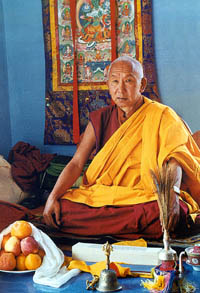 Keynote speech at Namche Conference will be delivered by His Holiness Ngawang Tenzin Zangbu, Head Lama of Tengboche Monastery |
Focus:
Presentations and workshops will cover a range of topics, according to the interests of participants. However, special attention will be given to the role of parks in mountain tourism and recreation. We should take advantage of the expert opinion of the local people in assessing the accomplishments of Sagarmatha National Park, and we will have an opportunity to compare this park with others around the world. Our intention is to generate results that will be useful both to Sagarmatha stakeholders and to stakeholders in other remote tourism destination.
Themes:
The following are preliminary focal areas. Prospective participants should indicate which is most appropriate for their presentations; suggestions for other focal areas will also be considered.
The Sir Edmund Hillary Mountain Legacy Medal:
In 2003 the entire world is celebrating the 50th anniversary of an an event that captured the imagination as few adventures have before or since: an expedition led by Sir John Hunt culminated in the first ascent of Mt. Everest by Sir Edmund Hillary and Tenzing Norgay.
Surprisingly, an event that has been etched in our collective consciousness as the nec plus ultra of human endeavor gave rise to an achievement of far greater importance. Sir Edmund found in his Himalayan adventure and his subsequent celebrity the inspiration and the opportunity to "return the favor" by assisting the people who were his comrades on that climb, and by helping to protect their beautiful homeland. Through his personal efforts, and through the foundations that he helped found in New Zealand, Canada, the United States, and Germany, Sir Edmund built some 30 schools, two airstrips, two hospitals, and 11 village clinics. He has assisted in the restoration of monasteries, instituted scholarship and teacher training programs, and established reforestation projects in Khumbu, Mustang, and the Annapurna region. In every case, Sir Edmund has undertaken projects at the specific request of the local residents.
In recognition of Sir Edmund's heroic efforts and in the hope of encouraging others to follow his example, we are establishing the "Sir Edmund Hillary Mountain Legacy Medal," to be awarded "for remarkable service in conservation of culture and nature in remote mountainous regions."
Qualifying Criteria:
The winners of the 2003 Sir Edmund Hillary Mountain Legacy Medal are Michael Schmitz and Helen Cawley. For full information, see www.mountainlegacy.org.
Registration:
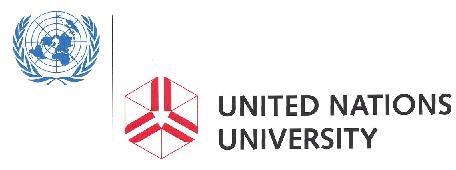
Organizing Bodies:

Supporting Organizations:
Sponsors:
Namche Conference Organizing Committee:
Honorary Chair of the NC Organizing Committee Junko Tabei, director of Himalayan Adventure Trust of Japan (HAT-J),an organization dedicated preserving mountain enviroments; First Woman to Summit Mt. Everest (1975), First Woman to do the "Seven Summits" (highest peak on each continent) For more info, see www.everesthistory.com
Contact:
|
Dr. Teiji Watanabe Associate Professor Laboratory of Geoecology Hokkaido University Sapporo, 060-0810, Japan email: twata@ees.hokudai.ac.jp
|
Dr. Seth Sicroff Director Bridges: Projects in Rational Tourism Development email: sicroff@namche.info |
Useful Links
